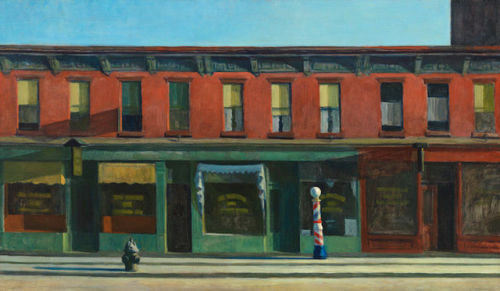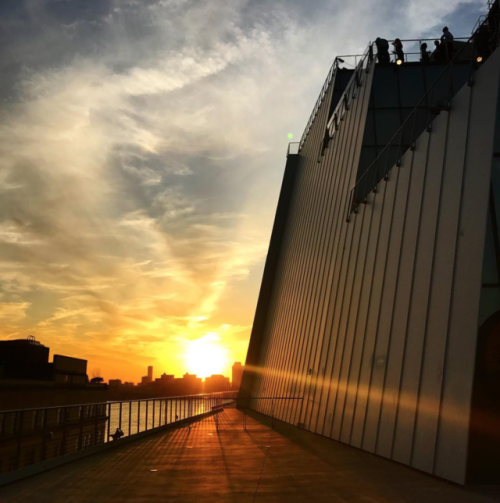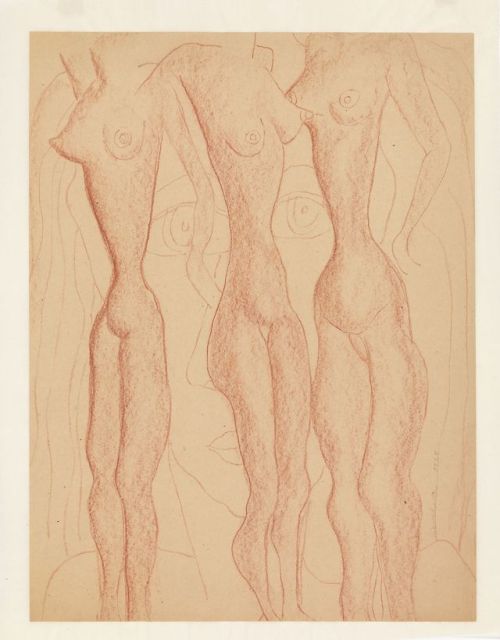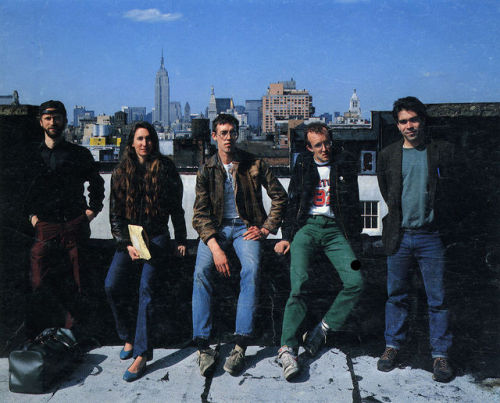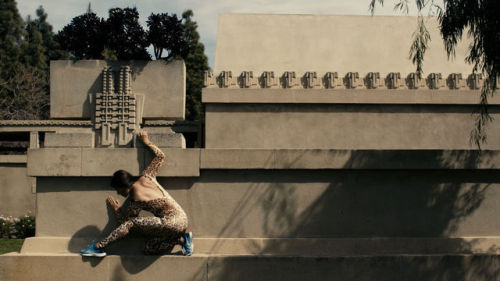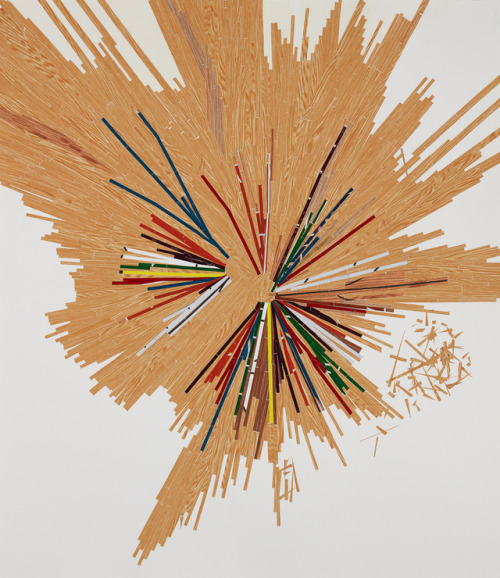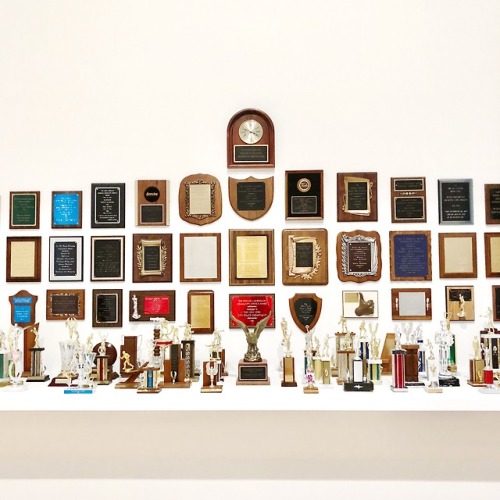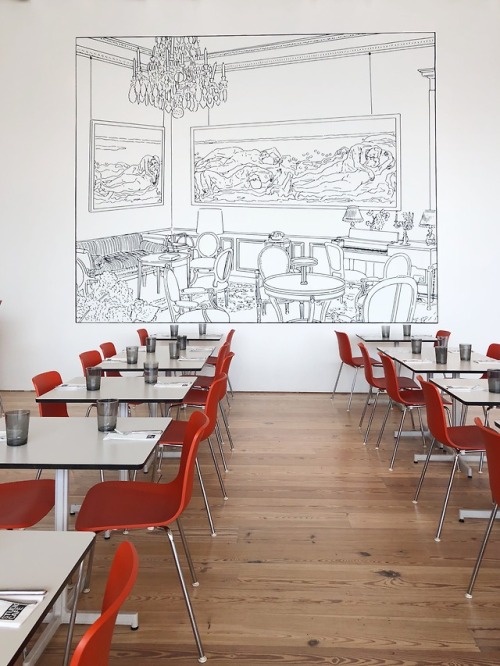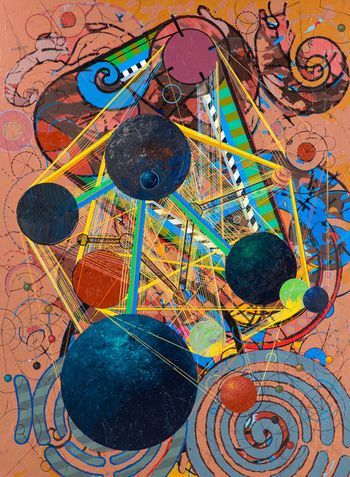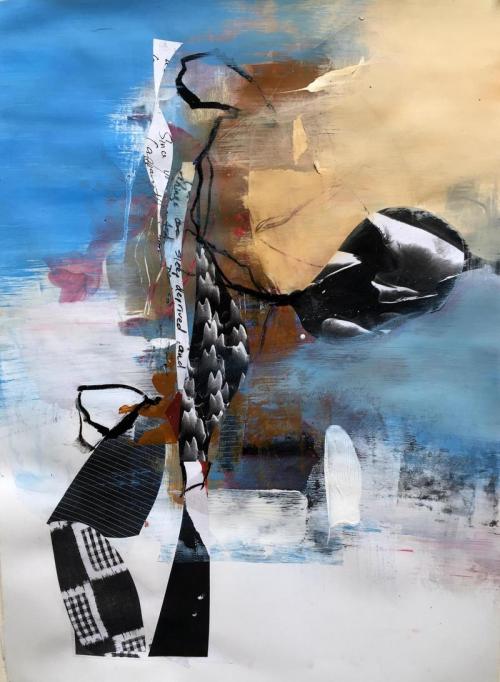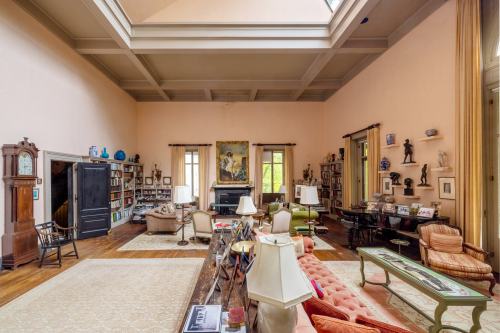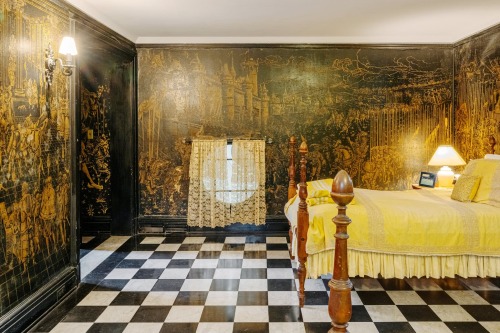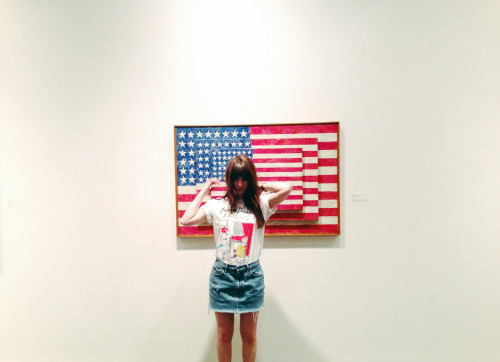#whitney museum
OPENING SOON! The designer duo Mike Eckhaus and Zoe Latta navigate fashion, consumption, and creation in Eckhaus Latta: Possessed. The exhibition highlights various aspects of the fashion industry, from advertising and the consumer experience to data collection and surveillance. Learn more on whitney.org.
Post link
Happy Birthday, Hopper! The Whitney Collection is home to over 3,100 works by Edward Hopper, born on this day in 1882! Explore more of his works on whitney.org.
[Edward Hopper (1882–1967), Early Sunday Morning, 1930. Oil on canvas, 35 3/16 × 60 ¼ in. (89.4 × 153 cm). Whitney Museum of American Art, New York; purchase with funds from Gertrude Vanderbilt Whitney 31.426. © Heirs of Josephine N. Hopper/Licensed by VAGA, New York, NY]
Post link
“What we call reality is an agreement that people have arrived at to make life more livable.“—Louise Nevelson. See her drawings and prints in the exhibition, Louise Nevelson: The Face in the Moon, open today at the Whitney!
[Louise Nevelson (1899-1988), Untitled, 1928. Fabricated red chalk on paper: sheet, 17 5/8 × 13 3/8 in. (44.8 × 34 cm); mount: 19 9/16 × 15 ½ in. (49.7 × 39.4 cm). Whitney Museum of American Art, New York; gift of the artist 69.220. © 2018 Estate of Louise Nevelson/Artists Rights Society (ARS), New York]
Post link
By showing this richness, this dynamism, this variety of languages, I think we’re getting closer to what is actually happening outside the steps of the museum.“—Whitney curator Marcela Guerrero on the newly opened exhibition Pacha, Llaqta, Wasichay: Indigenous Space, Modern Architecture, New Art. Learn more on whitney.org.
[Video by Colin Archdeacon]
Add to your summer reading list! Shop catalogues for this season’s new exhibitions, including David Wojnarowicz: History Keeps Me Awake at NightandMary Corse: A Survey in Light—now in the Whitney Shop.
Post link
On Friday, July 13, the Whitney will host Visual Arts and the AIDS Epidemic, a symposium that takes its name from an oral history project by the Smithsonian’s Archives of American Art. The symposium welcomes conversations with artists, activists, and oral historians on memories of the AIDS crisis in the 1980s and ‘90s. Learn more on whitney.org.
[(From Left to Right: John Fekner, Jenny Holzer, David Wojnarowicz, Keith Haring and Michael Smith). “Urban Pulses” Pittsburgh Center for the Arts, Pittsburgh, PA 1983 Photo credit: David Lubarsky 1983 Courtesy John Fekner Research Archive]
Post link
Hello, summer We’re thrilled to be debuting two new exhibitions this month. David Wojnarowicz: History Keeps Me Awake at Night brings together the artist’s diverse body of work, which spans collage, photography, painting, writing, and activism. Pacha, Llaqta, Wasichay: Indigenous Space, Modern Architecture, New Art features the work of seven emerging and established Latinx artists based in the United States and Puerto Rico. Both exhibitions open to the public on Friday, July 13!
Post link
Coming soon! Pacha, Llaqta, Wasichay: Indigenous Space, Modern Architecture, New Art investigates contemporary art practices that preserve and foreground Indigenous American notions of the built environment and natural world. The three words in the exhibition’s title are Quechua, the Indigenous language most spoken in the Americas. Each holds more than one meaning: pacha denotes universe, time, space, nature, or world; llaqta signifies place, country, community, or town; and wasichay means to build or to construct a house. Learn more on whitney.org.
[Ronny Quevedo, quipu, 2017. Screen print, contact paper, and enamel on paper, 44 × 38 in. Collection of the artist. Photo credit: Argenis Apolinario.]
Post link
Happy Fourth of July! Celebrate your Independence Day with American art—the Museum is open seven days a week in July and August (and open late until 10 pm Fridays and Saturdays)!
[Ellsworth Kelly (1923-2015), Red, White and Blue, 1961. Oil on linen, 88 ¼ × 66 9/16 in.]
Post link
Movement and time are critical components in Mary Corse’s work. Through the shifting position of our bodies in relation to the paintings, we become active participants in the creation of what we see. Hear more from the artist at whitney.org.
Post link
In the video Rez Dog, Rez Dirt, Demian DinéYazhi´ layers text and narration over footage of his grandparents’ land north of Ch´ínílį–Diné Bikéyah (Navajo Nation). In the voice-over, he describes returning to the reservation where he spent much of his childhood. Through the intimacy of his story and the video’s DIY aesthetic, his monologue expresses a deep emotional connection to the desert. Printed over the shaky, lo-fi footage is Joy Harjo’s poem “Returning from the Enemy,” which speaks to the profound relationship between home and land. While the simultaneity of the two texts introduces a sense of disconnection and rupture, for the artist the entwined stories are also a testament to the concept of survival. More than survival, it is a way of life that actively sustains Indigenous forms of knowledge. Learn more on whitney.org.
Post link
For his second work using trophies, Carl Pope researched violent interactions between police and residents of New York City that took place between 1949 and 1994. Pope purchased trophies made specifically for law enforcement and inscribed each with the names of both the person killed or brutalized by police and the office officer who committed the the act, naming the the pieceSome of the Greatest Hits of the New York City Police Department: A Celebration of Meritorious Achievement in the Community.“I think what makes the trophy collection so compelling is that it brings those rewards to public notice, in the minds of people who normally would not make that connection between the rewards that officers receive and why they receive those rewards."—Carl Pope. See the work on view now in An Incomplete History of Protest, and hear more from the artist on whitney.org.
Post link
Louise Lawler’s vinyl tracing of her 1992 work, Salon Hodler, can be seen in our eighth-floor studio cafe. Lawler documents a well-appointed salon filled with rare antiques and nineteenth-century photographs. Her imagery reveals the often unseen impact that institutional, social, and economic contexts exert on the functions of art and the ways we understand it.
Post link
“How do I position myself? As long as homophobia still exists, I will continue to make work in relationship to my life and visibility”—Catherine Opie
For over thirty years, Whitney CollectionartistCatherine Opie has captured iconic photographs of people and places that are often overlooked, redefining the image of homosexuality. In honor of Pride this month, we’re highlighting works from three Whitney Collection artists who have either identified with, or fought for, the rights of the LGBTQ community through their art practice.
[Catherine Opie (b. 1961), Jenny (Bed), 2009. Chromogenic print. Whitney Museum of American Art, New York; Purchase, with funds from the Photography Committee and The Robert Mapplethorpe Foundation. © Catherine Opie]
Post link
As part of our ongoing celebration of Pride this month, we’re highlighting works from three Whitney Collection artists who have either identified with, or fought for, the LGBTQ community through their art. David Wojnarowicz refused a signature style, adopting a wide variety of techniques with an attitude of radical possibility. His work spans photography, painting, music, film, sculpture, writing, and activism. David Wojnarowicz: A History Keeps me Awake at Night opens at the Whitney July 13!
[David Wojnarowicz with Tom Warren, Self-Portrait of David Wojnarowicz, 1983–84. Acrylic and collaged paper on gelatin silver print, 60 × 40 in. (152.4 × 101.6 cm). Collection of Brooke Garber Neidich and Daniel Neidich]
Post link
In celebration of Pride during the month of June, we’re highlighting works from three Whitney Collection artists who have either identified with, or fought for, the LGBTQ community through their art. The pioneering video artist Charles Atlas has brought together dance, performance, and media for nearly four decades. Here, see a still from his work, What I Did Last Summer—a three-part chronicle of queer nightlife in New York in the early 90s—shown as a part of the exhibition Human Interest: Portraits from the Whitney’s Collection.
[Charles Atlas (1949–), still from What I Did Last Summer, 1991. Video, color, sound, 12 min. Whitney Museum of American Art, New York; purchase, with funds from Lori and Alexandre Chemla 2013.82 Courtesy Electronic Arts Intermix (EAI), New York.]
Post link
“Art is what you can get away with."—Andy Warhol.
Opening at the Whitney Museum this fall, Andy Warhol–From A to B and Back Again represents the first Warhol retrospective to be organized by a U.S. institution in over thirty years. Read more in The New York Times.
[Portrait of Andy Warhol at the Whitney Museum of American Art, 1971. Photo © Jack Mitchell]
Post link
Make your own magic. The LA-based purveyors from Spellbound Sky join us this week at the Whitney Shop with their inspired stone, quartz and crystal accessories.
Post link
Experiencing the Bauhaus while Black…
Mr. Robert Reed an African American Painter from Yale School of Art, where he received an M.F.A. in 1962. Despite his highly decorative academic life his experimental work using the bauhaus theory had fell into Oblivion until now…
Reed was born in 1938. He had only recently graduated high school when the Brown v. Board of Education of Topeka ruling was announced (but still did not put an end to segregation in Charlottesville, instead resulting in Virginia Senator Henry Byrd’s “Massive Resistance” policy). Reed then experienced major culture shock after he graduated from Morgan State University, a historically Black college, and started pursuing his BFA at Yale. He grew up in a Black community in segregated Virginia, and his move to Connecticut meant that he, unlike African Americans who were born and raised in northern states, had to learn as an adult to navigate a seemingly integrated, but no less racist establishment. The studio became Reed’s safe haven for freedom to invent and play, and his geometric abstractions allowed him to explore color adventurously while simultaneously creating visual metaphors of his personal experiences. Reed’s paintings address his nimble navigation of a world in which color bore especially oppressive meanings, and they do so via a coded visual language in which colors represent institutions and locales through which he made his complicated way, from the segregation-era South into the halls of the Ivy League. And it was through the formal tools of abstraction he learned through his Bauhaus professors at Yale that provided Reed the visual language to “hide in plain sight.”
Read article here https://bit.ly/3bzJalU
ACCOLADES
His work has been exhibited in America and Europe and has been included in group exhibits at
The Whitney Museum inaugural exhibition “America Is Hard to See”,
Albright-Knox Art Gallery, the Biennial of the Whitney Museum of American Art, the Hirshhorn Museum
The Walker Art Center, the Minneapolis Institute of Art,
The Yale University Art Gallery.
His solo exhibits include:
The Whitney Museum of American Art,
The Bayly Museum in Charlottesville, Virginia.
The Washburn Gallery in New York, the McIntosh Gallery in Atlanta and the Yale School of Art.
The list goes on….
Reed also authored several intensive studio programs including ACRE, SIX-Summer in Experiment, and The Site Program. He was the founder and director of the Institute for Studio Studies, which was associated with the Yale Summer Session in Auvillar, France, from 2009 until his death in 2014.
Mr. Reed lectured extensively and taught at Skidmore College in 1964 and the Minneapolis College of Art and Design, where he was head of the Foundation Studies Division. He was appointed to the Yale School of Art faculty in 1969 where he served for nearly 45 years as professor of painting/printmaking. He held several appointments as director of undergraduate studies in art at Yale starting in 1969 and also served as director of graduate studies in painting. From 1970 to 1975 he directed the art division of the Yale Summer School of Music and Art at Norfolk, Connecticut.
Reed was a National Council of Arts . He was awarded a grant from the National Endowment for the Arts. He was a recipient of the 2004 National Council of Art Administrators Distinguished Teaching of Art Award from the College Art Association, and was elected in 2009 to the National Academy Fellows in New York. He was awarded an honorary Doctor of Fine Arts degree from the Minneapolis College of Art and Design. He served as a board member for the McDowell Colony, the Virginia Center for Creative Arts, The Silvermine Guild Center for the Arts, Second Street Gallery and the Lyme Academy of Art.
Reed received numerous awards including the National Council of Arts Administrators, the College Art Association’s Distinguished teaching award, the William DeVane teaching award, National Academy Fellow and was a recipient of a grant from the National Endowment for the Arts.
Post link
“Ghosthymn (after the Raft),” 2019-21, during its creation.
It references “The Raft of the Medusa” by Théodore Géricault but also “levels of precarity exposed by the pandemic and the embodied anxiety during those early months.”
By Julie Mehretu, in the New York Times
Post link
Museum wanderer Amber harmonizing swimmingly with Jasper Johns’ Three Flags in her snazzy Francine Dressler tee.
Post link
“A deft, serious achievement, a signal contribution to downtown and the city’s changing cultural landscape.” —The New York Times in today’s cover story on the new Whitney.


